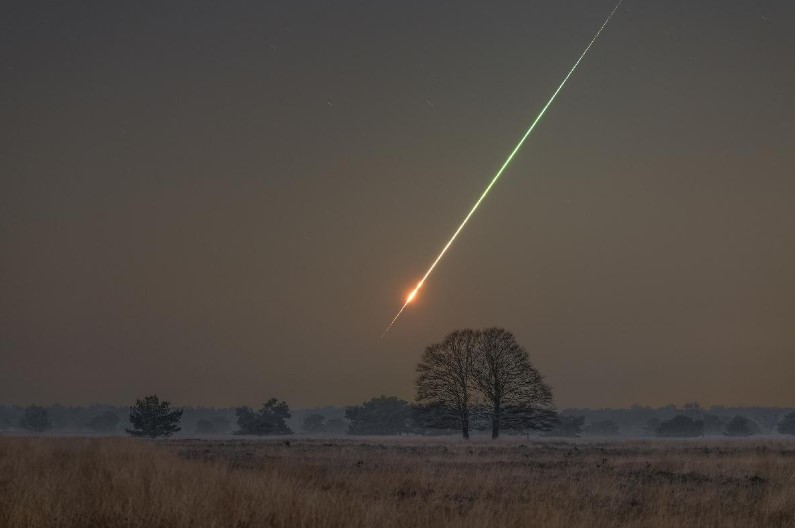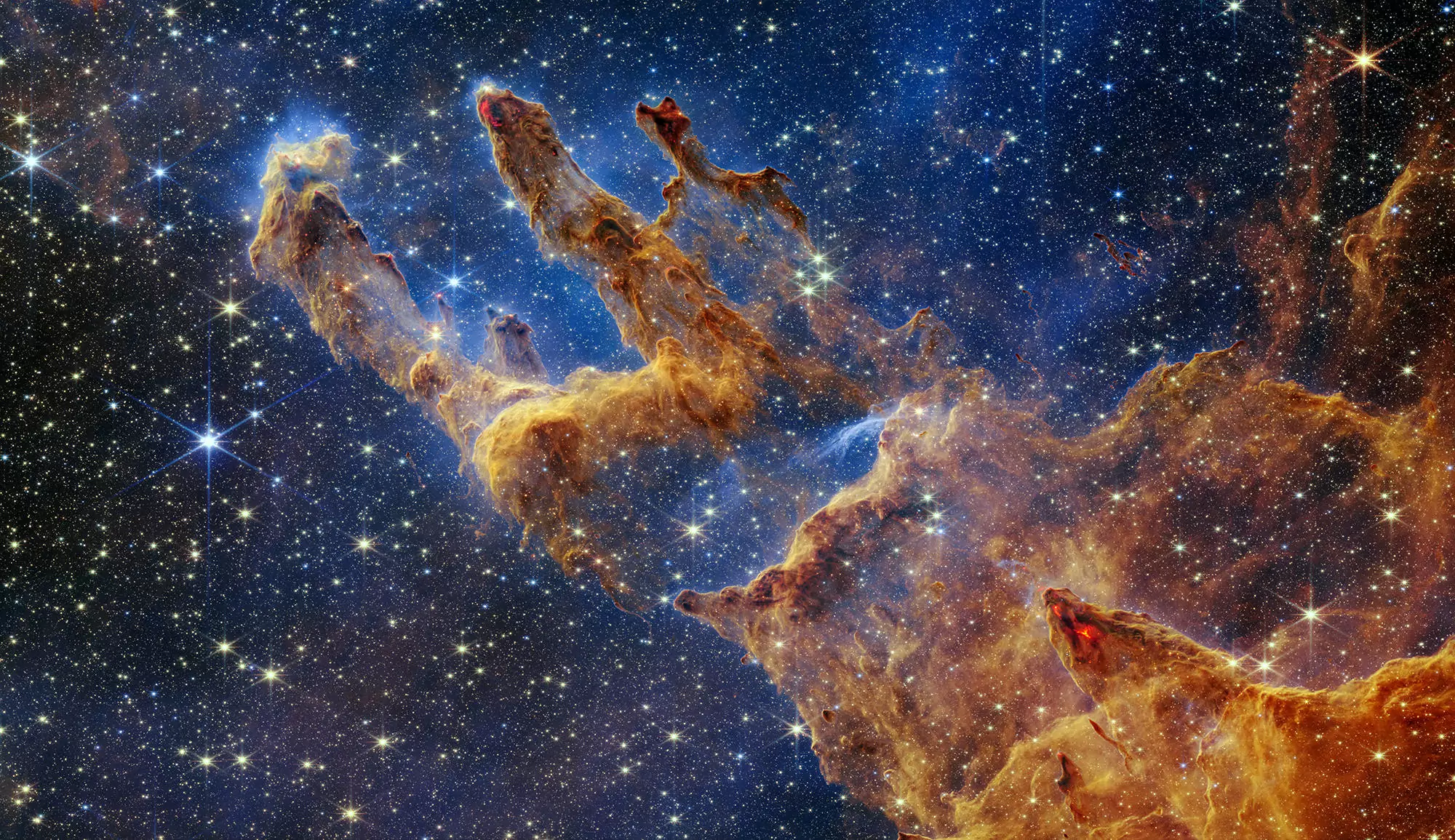Discovered on February 12, 2023, just seven hours before entering the atmosphere, 2023 CX1 struck Earth above Normandy on February 13 at 02:59 UTC. Almost spherical in shape, it measured just under one meter in diameter and weighed approximately 650 kg. It disintegrated violently at an altitude of 28 km, releasing 98% of its kinetic energy in a fraction of a second—an exceptional behavior for an object of this size. The explosion scattered more than a hundred fragments across Normandy. The meteorite, named Saint-Pierre-le-Viger (SPLV), is the only ordinary chondrite ever studied both from space and in the laboratory.

An unprecedented scientific mobilization
More than 100 researchers and citizens across Europe, America, Africa, and Australia joined forces to study every aspect of this exceptional fall : telescopic discovery, orbital tracking, atmospheric observations using optics, infrasound, and seismic waves, and geochemical analyses in the laboratory. This unique alliance between professional and citizen science demonstrates the power of international cooperation in the face of rare and crucially important celestial events.
Key scientific findings
- A record prediction - 2023 CX1 is only the seventh asteroid to be detected before impact. Thanks to an unprecedented observation strategy, ESA and NASA calculated the time and place of the fall with unprecedented accuracy.
- A world first - The FRIPON/Vigie-Ciel network mobilized the public to film the asteroid’s entry into the atmosphere, resulting in the first “targeted” observation of a meteor in history. It also made it possible to quickly locate the meteorites on the ground thanks to an exceptional mobilization of citizens.
- An “ordinary” asteroroïde... but unique - It is the only imminent impactor identified as an ordinary L-type chondrite, the most common type of meteorite on Earth.
- An orbit of unparalleled accuracy - The difference between the predicted and observed trajectory in the atmosphere was less than 20 m, making SPLV the meteorite with the most accurately measured orbit to date.
- Origin traced - Analyses show that 2023 CX1 formed in the inner main belt—between Mars and Jupiter—and broke away from its parent body around 30 million years ago. Its orbit is consistent with an origin in the Massalia asteroid family.
- An atypical fragmentation - Resistant to high dynamic pressures (4 MPa), the asteroid disintegrated abruptly at an altitude of around 28 km, producing a spherical and concentrated shock wave.
- An increased risk - Hydrodynamic simulations show that this type of fragmentation could cause more damage on the ground than a gradual disintegration, such as the Chelyabinsk event in 2013.
Planetary defense challenges
This study highlights the importance of integrating spectral, structural, and dynamic characterization of detected objects prior to impact into planetary defense protocols. Asteroids associated with L-type chondrites, originating from the inner main belt, may require enhanced warning measures and appropriate evacuation plans in the event of a threat.
"We have confirmed the existence of a new population of asteroids linked to L-type chondrites, capable of fragmenting violently in the atmosphere and releasing almost all their energy in a single burst. This type of asteroid must be taken into account in planetary defense strategies, as it poses an increased risk to inhabited areas,", explains Auriane Egal, astrophysicist at the Montreal Planetarium – Space for Life and member of the FRIPON/Vigie-Ciel network.
Resources
- « Catastrophic disruption of asteroid 2023 CX1 and implication for planetary defence », Egal et al., Nature Astronomy (2025), 10.1038/s41550-025-02659-8
- « Récupération et étude prévue de la météorite Saint-Pierre-Le-Viger : une réussite du programme de science citoyenne FRIPON/Vigie-Ciel », Zanda et al., 86e réunion annuelle de la Meteoritical Society (2023)
- https://espacepourlavie.ca/chute-et-analyse-de-lasteroide-2023-cx1
- « Impact et analyse de l’astéroïde 2023 CX1 » : https://youtu.be/l0Yb0cfU4uw?si=LREFB00ubtvJ3KnS
